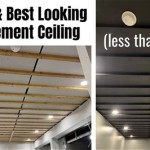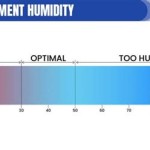Cover Insulation in Basement Ceiling: A Comprehensive Guide
Insulating your basement ceiling is crucial for maintaining a comfortable indoor environment, reducing energy consumption, and preventing moisture and mold growth. Cover insulation plays a vital role in achieving these benefits by protecting the insulation material from moisture and air infiltration.
When choosing cover insulation for your basement ceiling, there are several essential aspects to consider:
Material Type
Kraft Paper: Kraft paper is a durable and cost-effective option that provides a vapor barrier and protects the insulation from dust and debris. It's commonly used in unfinished basements.
Polyethylene Film: Polyethylene film is a waterproof and airtight barrier that effectively prevents moisture from reaching the insulation. It's ideal for humid climates or areas prone to flooding.
Aluminum Foil: Aluminum foil provides excellent moisture resistance and reflection, helping to regulate basement temperatures. It's often used in conjunction with kraft paper or polyethylene film.
R-Value
The R-value measures the thermal resistance of the insulation. Higher R-values indicate better insulation performance. For basement ceilings, R-values between 13 and 18 are typically recommended.
Vapor Permeability
Vapor permeability refers to the ability of the insulation to allow moisture to pass through. Ideally, cover insulation should have low vapor permeability to prevent moisture from reaching and damaging the insulation material.
Installation Method
Cover insulation can be installed using different methods, including stapling, taping, or adhesive. Choose a method that suits your basement's layout and access.
To ensure the best performance and durability, consider the following additional tips:
Seal Joints and Seams
Properly seal all joints and seams between the cover insulation sheets to prevent air leaks and moisture penetration.
Maintain Ventilation
Provide adequate ventilation in the basement to allow excess moisture to escape and prevent condensation on the insulation.
Inspect Regularly
Regularly inspect your basement ceiling and cover insulation for signs of damage or deterioration. Repair or replace insulation as needed.
In summary, choosing the right cover insulation for your basement ceiling is essential to protect the insulation material, prevent moisture issues, and maintain a comfortable and energy-efficient space. Consider the material type, R-value, vapor permeability, installation method, and additional tips to optimize the effectiveness of your basement insulation.

Should I Insulate My Basement Ceiling And Walls Aire Serv

Ideas To Cover A Basement Ceiling

How To Cover Insulation In Basement

How To Cover Insulation In Basement Ceiling Barrier Energy

Ceiling Insulation In Your Basement

A Guide On Basement Ceiling Insulation
Covering Exposed Fiberglass Insulation In Unfinished Basement Diy Home Improvement Forum

What Type Of Vapor Barrier Plastic To Use As An Insulation Cover

What Is Basement Ceiling Insulation And It Worth

Basement Insulation Upstate Spray Foam








